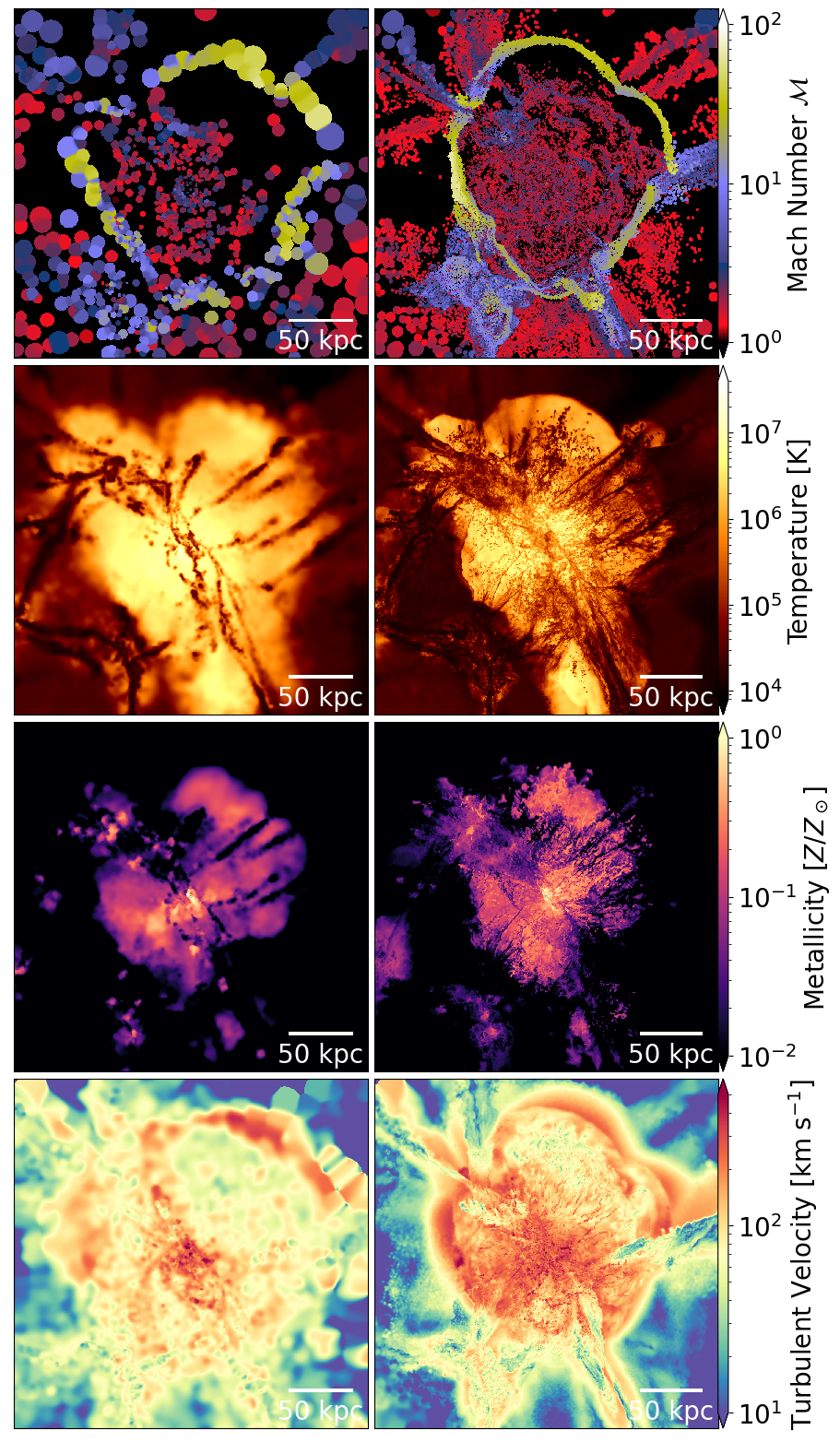Research highlight: gaseous haloes and the circumgalactic medium
As dark matter haloes collapse, their baryonic content grows by accreting gas and stars from the intergalactic medium (IGM). This gas then feeds the formation of a galaxy at the halo's centre. The mechanism by which this feeding occurs is not fully understood, as it involves a complex interplay between cooling, shock heating, and feedback from a variety of physical processes in the galaxy itself. All of these processes act in concert in the circumgalactic medium (CGM), which plays host to the `baryon cycle’ that regulates the process of galaxy formation. Researchers at KICC aim to understand these processes better, to help improve models of galaxy formation and evolution and to interpret current and future observations.
In massive haloes, cold gas is thought to bypass accretion shocks and penetrate deep into haloes via filaments that deliver cold gas through the CGM. However, this is difficult to model numerically, as observations have shown that the CGM is made up of multi-phase gas that cosmological simulations do not generally focus resolution on. At KICC we have developed a novel numerical tool to boost numerical resolution on-the-fly around the cosmic structure formation shocks, allowing us to better resolve the boundary of the CGM and IGM in massive haloes. Figure 1 demonstrates the physical effect that boosted resolution has on the various properties of cosmic gas, resulting in much sharper accretion shocks, with more metal-poor gas penetrating into the hot halo and leading to a much more multi-phase CGM in line with observations. Also there is a significant boost in gas turbulent velocities within the halo, which is an important prediction when comparing models to the next-generation of X-ray observations from eROSITA and Athena. Improved physical models and a better understanding of the CGM and the feeding of galaxies are also fundamental for a wide variety of current and upcoming observations, including those by MUSE and KCWI and enhanced Sunyaev-Zel’dovich observations from SPT and ACT.



